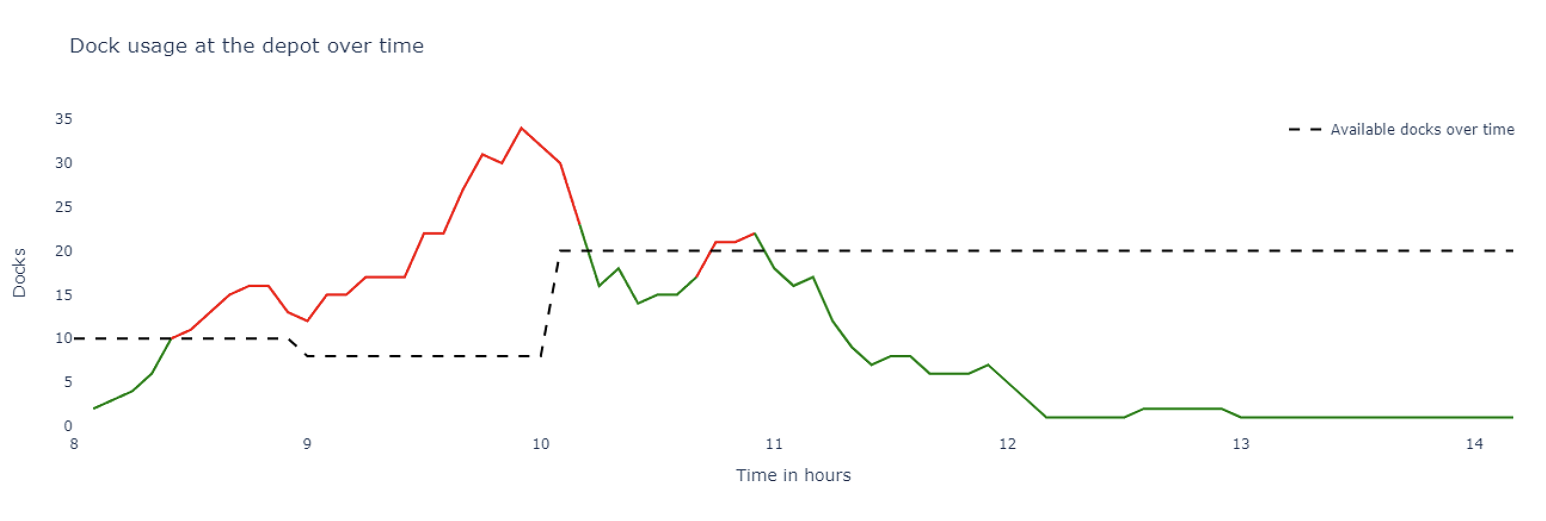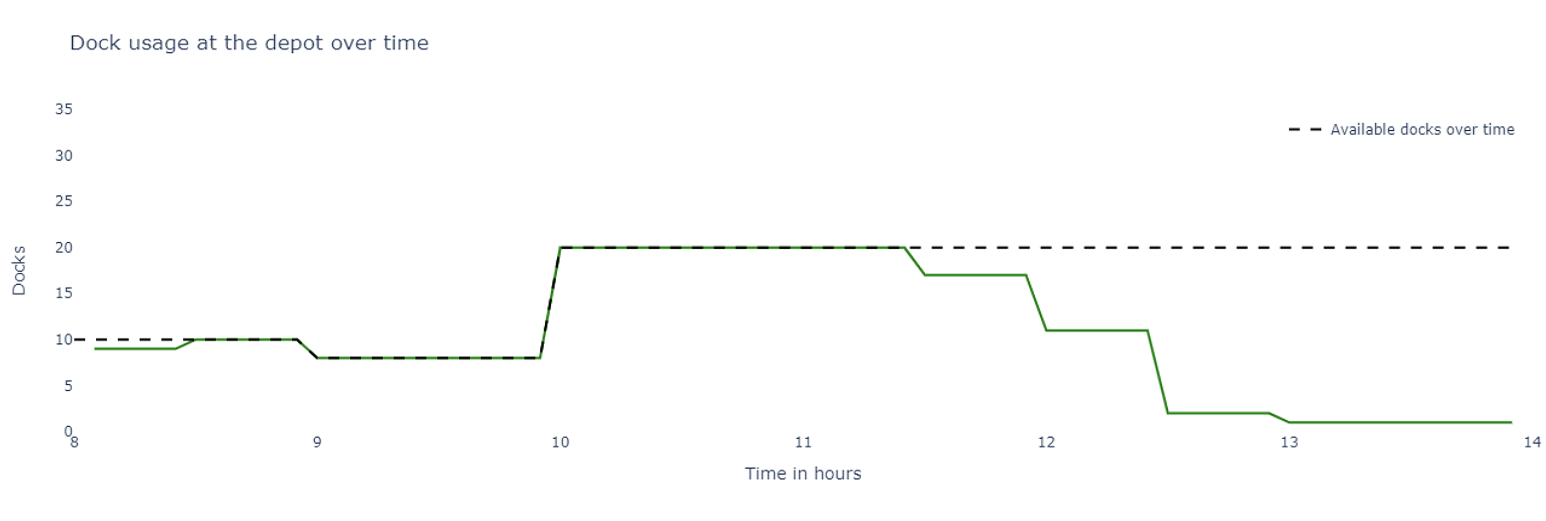Dock Scheduling with PTV OptiFlow
Are your warehouse loading docks a bottleneck in your transport process? Are you struggling with peaks in loading activity, resulting in chaos, long queues of trucks, and delays in delivering your goods to customers?
With PTV OptiFlow, congested loading docks are a thing of the past. Through an integrated solution of dock scheduling and route optimization, PTV OptiFlow creates a transport plan adapted to your loading capacity while ensuring the efficiency of your delivery routes. In an automated way.
What is dock scheduling?
Dock scheduling is planning the arrival and departure of vehicles at loading docks in a warehouse or depot. The aim is to create a schedule that respects a facility’s loading capacity and spreads loading activity over time. This avoids overwhelming loading peaks and the resulting delays.
Why use PTV OptiFlow for dock scheduling?
How does dock scheduling fit into your transport planning process? Are you defining fixed depot start times for vehicles, before creating their delivery routes? Or, are you manually correcting driver start times after determining their routes? Then you know this is a daunting task.
It involves aligning many factors such as dock availabilities, driver skills, work schedules, vehicle properties, and customer timings. Manually solving this puzzle takes a lot of time and easily leads to mistakes. On top of that, your decisions are impacting the costs of your delivery plan.
That’s where PTV OptiFlow comes in. As dock scheduling is directly integrated into PTV OptiFlow’s route optimization algorithm, depot start times and delivery routes are optimized simultaneously. This means depot capacity, transportation costs, and requirements are balanced all at once, reducing the total planning costs.
PTV OptiFlow’s dock scheduling solution also saves valuable planning time. All you need to do is specify the number of available docks at your depot or warehouse. This number can be fixed or fluctuate throughout the day. This flexibility ensures that your delivery plan matches your depot operations seamlessly and leaves maximum room for route optimization.
How does dock scheduling with PTV OptiFlow work?
Imagine you have over 100 drivers and vehicles operating out of your depot. Every day, they transport orders to numerous customers, all using different delivery time windows and constraints.
When creating today’s delivery plan using PTV OptiFlow without dock scheduling, dock usage in your depot throughout the day may look like this chart. There are multiple peaks in dock activity, and dock capacity is often exceeded. Just before 10 AM, no less than 34 vehicles are expected to be ready to load, while only 10 docks will be available. The outcome? Drivers lining up and money out the window.

How can you prevent this from happening?
Just specify the number of available docks over time and let PTV OptiFlow generate an optimal transport plan respecting this limit. This time, the dock usage chart shows that the number of vehicles starting at the depot is more spread out over time and never surpasses the number of available docks. The result? Cost savings, happy drivers, and relaxed depot staff.
